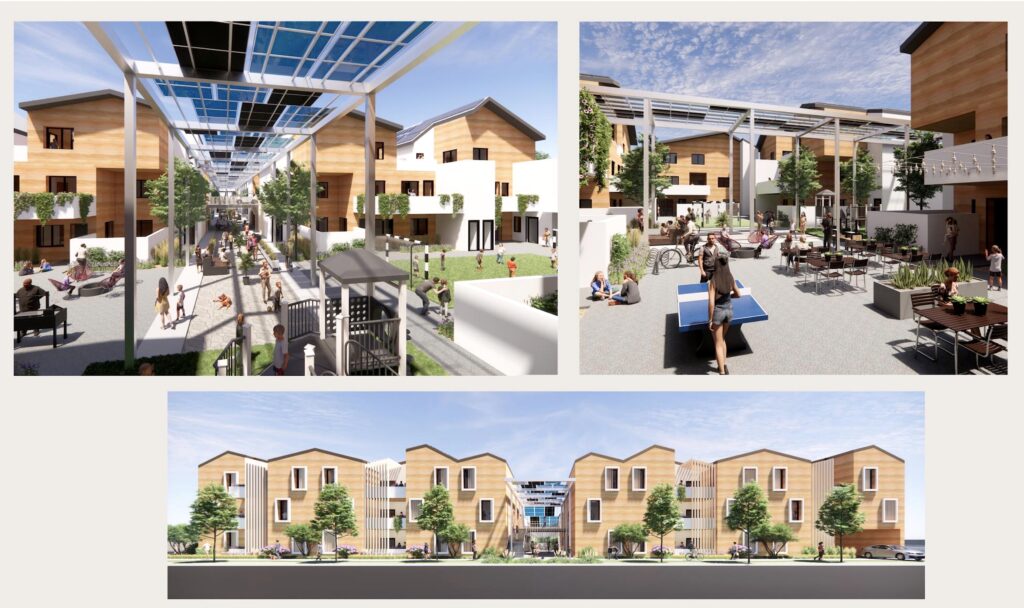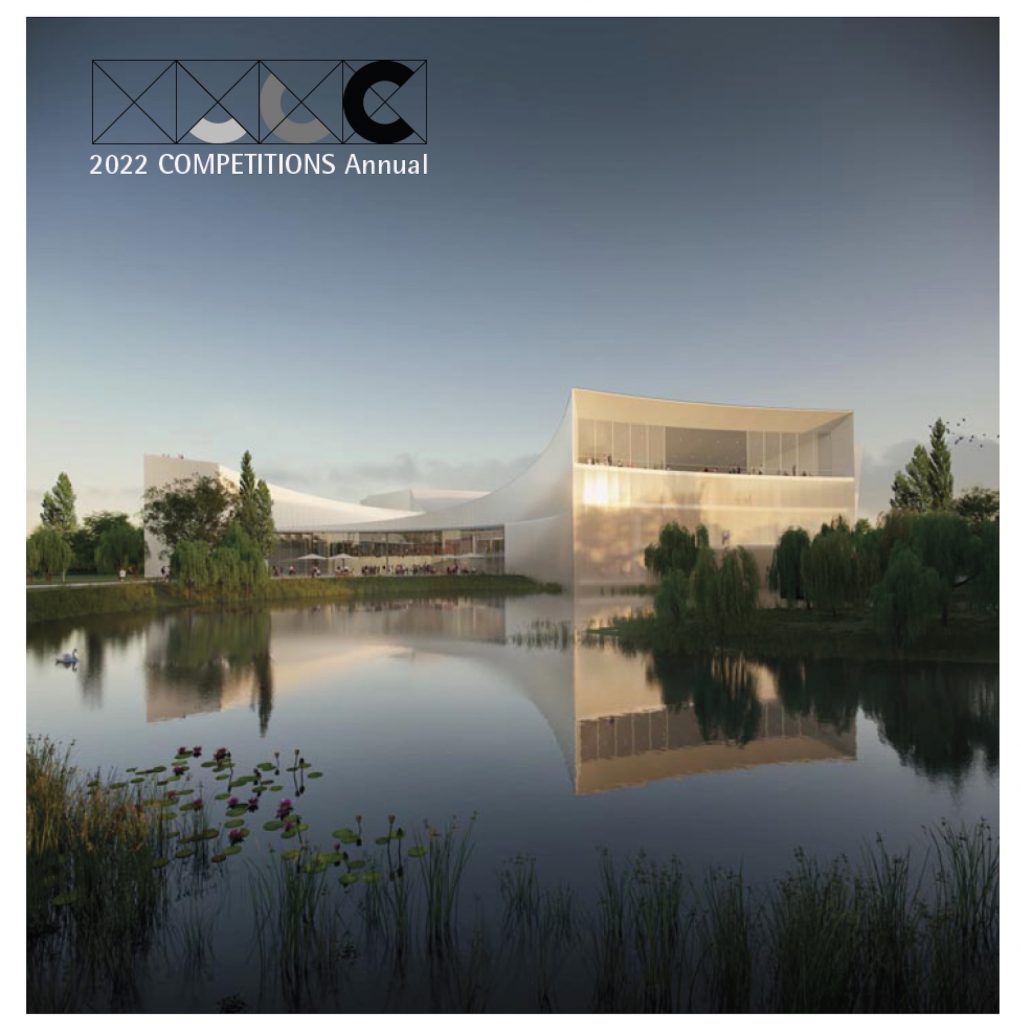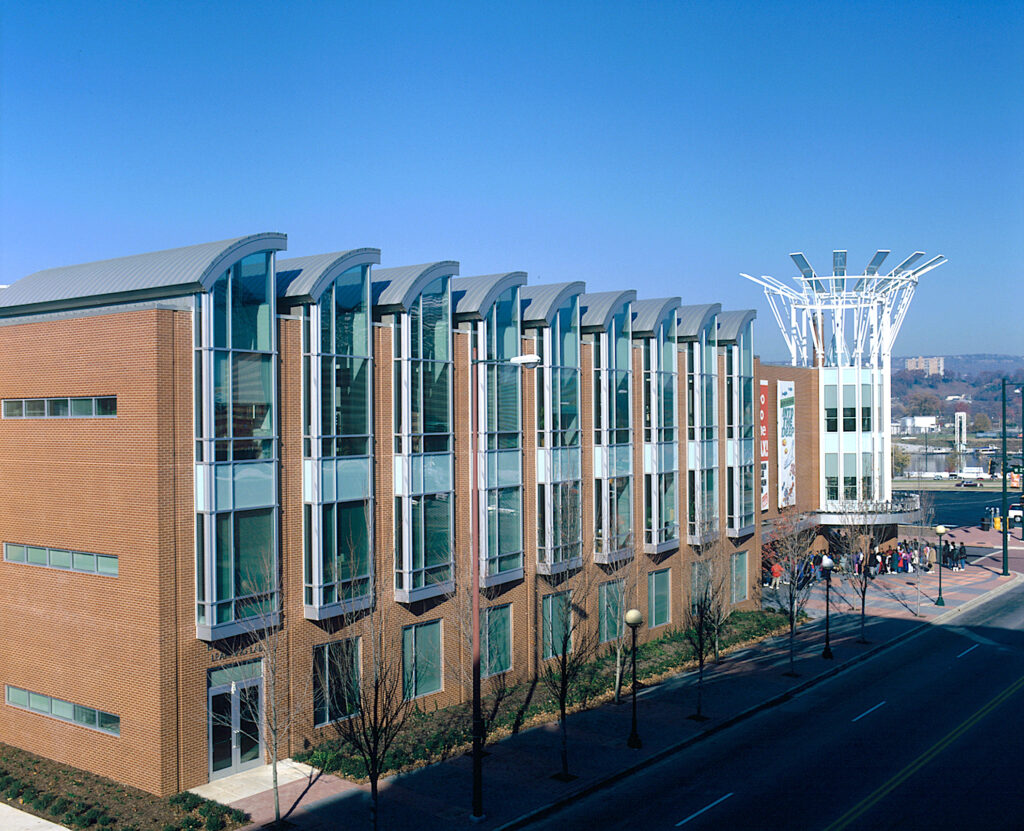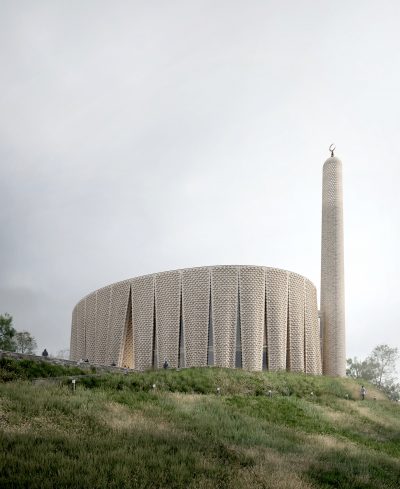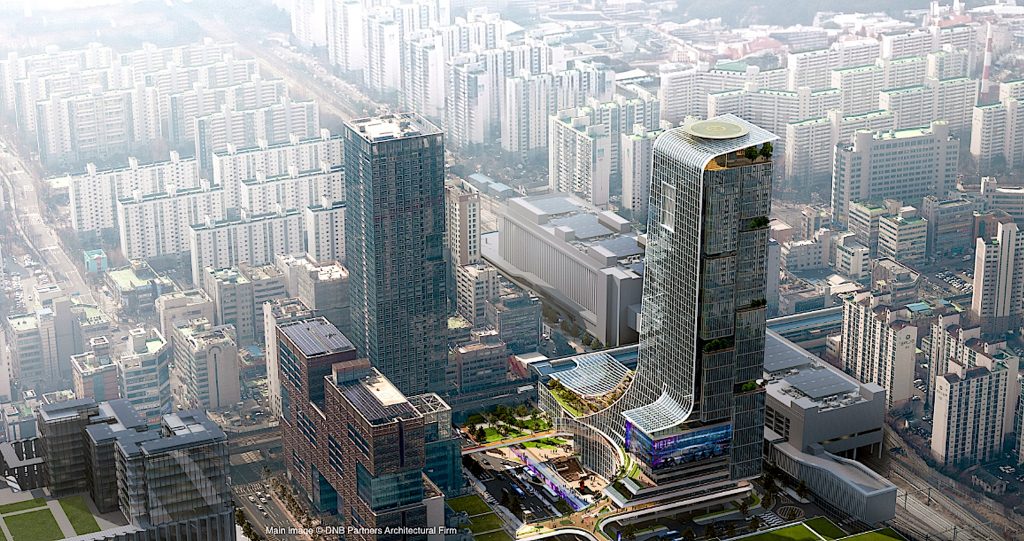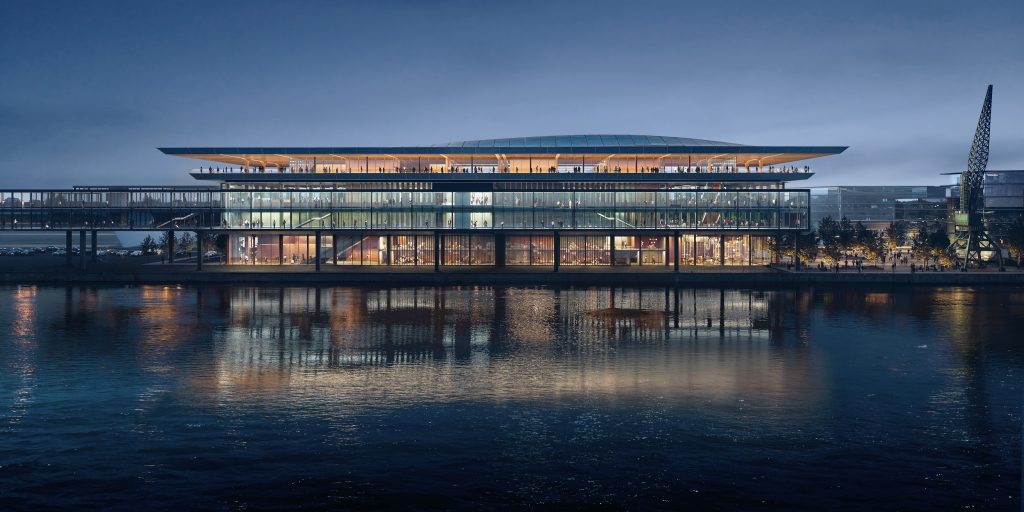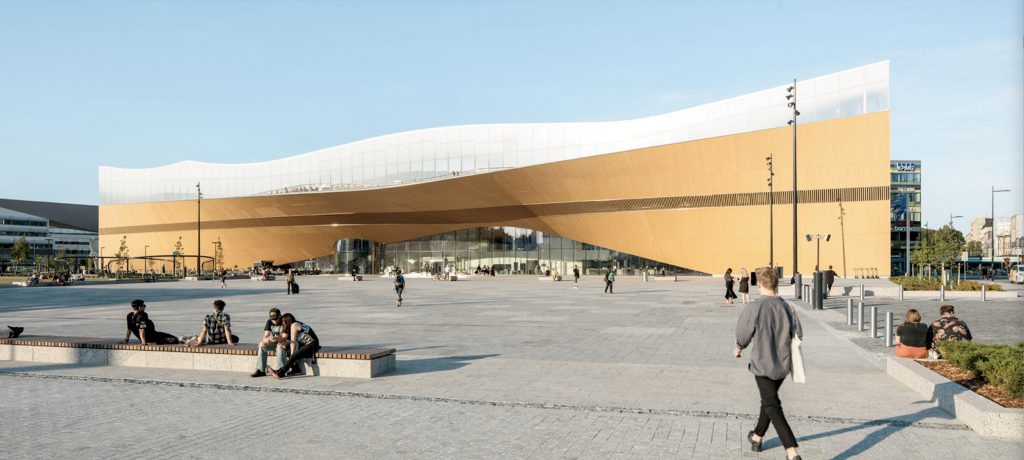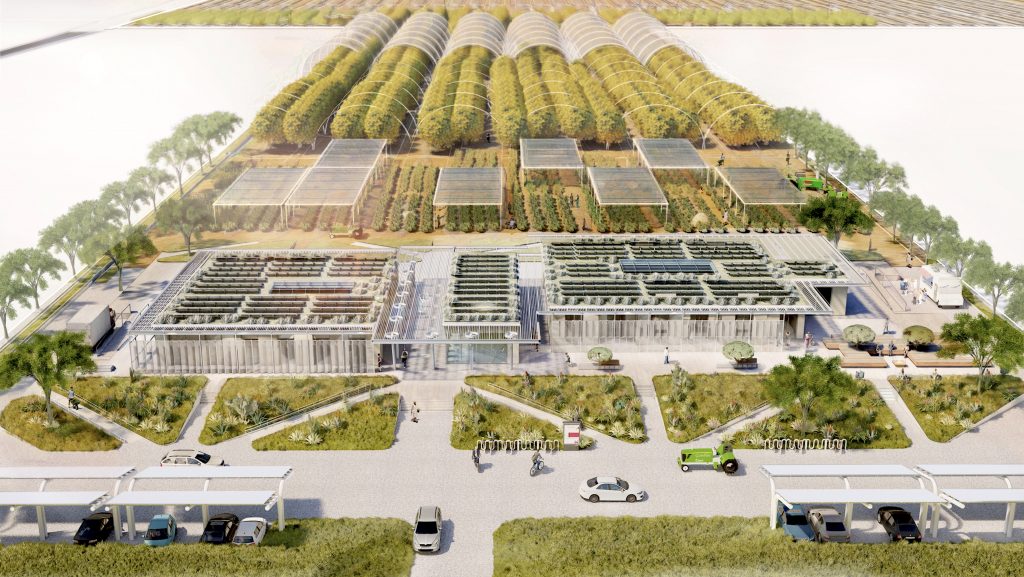2023/04 Architecture at Zero Competitions

2023 Teaching and Innovation Farm Lab
Graduate Student Honor Award
University of Southern California (USC)
Architecture at Zero competitions, which focus on the themes, Decarbonization, Equity and Resilience in California, have been supported by numerous California utilities such as Southern California Edison, PG&E, SoCAl Gas, etc., who have recognized the need for better climate solutions in that state as well as globally. Until recently, most of these competitions were based on an ideas only format, with few expectations that any of the winning designs would actually be realized. The anticipated realization of the 2022 and 2023 competitions suggests that some clients are taking these ideas seriously enough to go ahead with the projects.
?? Here it should be noted that a state grant of $40M to help support projects of this nature in the Valley resulted in a logical institutional fit, both for organizing a design competition, as well as carrying through the idea to its ultimate completion. The 2022 Architecture at Zero Competition, which focused on housing for farm workers in California’s Central Valley, awarded a commission to Fresno based Paul Halajuan Architects, one of three highly ranked firms receiving a “merit award” in that competition.?
The 2023 Net Zero Farm Lab Competition
Settled by African American pioneers in 1908, the settlement of Allensworth, located in California’s Central Valley, initially became a viable farming community under the leadership of Civil War veteran, Lt. Col. Allen Allensworth. The intention of this “utopian” idea was to provide black farmers with an environment where they could prosper without exposure to a racist ideology. After successful beginnings, Allensworth was beset by several unfortunate events that reduced it from a prosperous farming community to a roadside curiosity. From the original 2,700 acres, it today measures only 240 acres. Of course droughts and a declining water table have also contributed mightily to its decline; but the move of the Santa Fee Railroad’s station, which had served the community since its founding, to a neighboring white town, probably did just as much to contribute to Allensworth’s decline. Added to this was the unfortunate accidental death of Allensworth himself, hit by a car in 1914—the same year that the railroad stop was moved. At that time the community not only had a general store (1910), but a functioning library, post office, and a new two-room school. Former dreams of attracting a university to Allensworth, were just that, and nothing more.?
? ?The community had become a shadow of its former self, when in the mid-70s, California State Parks restored several buildings and declared Allensworth a historic landmark. But, minus a major attraction, there has been little at the present to make Allensworth a point of interest for outsiders. On the other hand, with these improvements, support emerged for the development of a visitors center and updating of the campground facilities. The interest of a descendent of an Allensworth resident in farming led to his visit to the Center for Land Based Learning and their support to tap the $40 million grant for an agriculture program. Always looking for a new topic as a theme for one of its annual competitions, Architecture at Zero took notice of this program and brought the community to the table as part of its 2023 Architecture at Zero competition. As a competition theme they settled on “Designing a teaching and innovation lab that will help the community become a destination for sustainable agriculture.
? ?The 2023 competition focused on the design of a Teaching & Innovation Farm Lab, located in the Central Valley, north of Bakersfield. The news concerning that project, released by the Allensworth Progressive Association (APA), is that several of the Professional and Student teams from the competition have been interviewed to discuss their entries in more detail. At this stage the APA is concentrating on refining the building program and developing a fundraising plan. Since the client already had been promised $12 million for implementation of the project, one might assume that additional funding is intended to secure the stability of the project well into the future. The community had become a shadow of its former self, when in the mid-70s, California State Parks restored several buildings and declared Allensworth a historic landmark. But, minus a major attraction, there has been little at the present to make Allensworth a point of interest for outsiders.?The interest of a descendent of an Allensworth resident in farming led to his visit to the Center for Land Based Learning and their support to tap the $40 million grant for an agriculture program. Always looking for a new topic as a theme for one of its annual competitions, Architecture at Zero took notice of this program and brought the community to the table as part of its 2023 Architecture at Zero competition. As a competition theme they settled on “Designing a teaching and innovation lab that will help the community become a destination for sustainable agriculture.
?
?
?
[eme_events order=DESC limit=100 scope=future showperiod=monthly category=1]
[eme_events showperiod=monthly category=2]
?
A Final Word
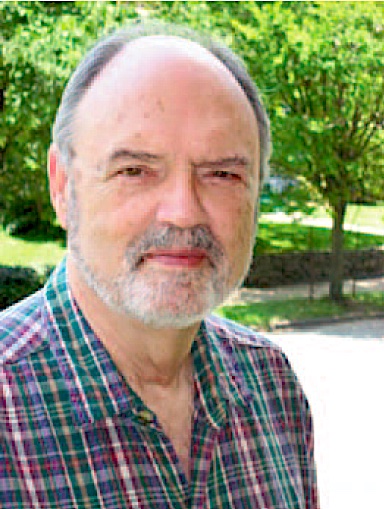
How did COMPETITIONS get started? Whether from architects or chance encounters with laypersons, hardly a week would pass without being questioned about its origin. Actually, it was quite simple. While studying for another degree in Berlin, I became friends with two young architects, both not yet in their thirties, and at the age where European architects were frequent participants in competitions. They offered to take me along to exhibits of competition entries, even those where they had not submitted a design. Discussions always ensued, and, although I had always been interested in architecture, this was the real beginning of a crash course in the field. I learned from them that the best opportunity to climb the career ladder was to do well in a competition.
?? As it happened, friend Ivan Krusnic subsequently won a competition for sixteen middle schools in Berlin, and the other friend, Frederick Borck, turned out to be one of the primary experts in German hospital design. Furthermore, there was the opportunity to learn about the results of numerous competitions from excellent coverage by several of the publications covering those important projects.
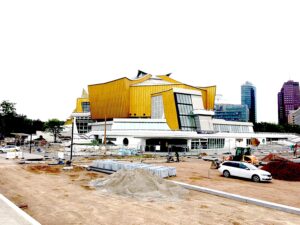 .?
.? 
Berlin Philharmonie in 2019. New landscaping (left); interior concernt hall (right)
?? During my stay in Berlin, there had to be two competitions that still are firmly etched in my memory, the Philharmonie by Hans Scharoun and Tegel Airport by Manfried von Gerkan and Volkwin Marg (see p. 200). By coincidence, I bumped into von Gerkan on the way to his induction as an AIA Fellow at a convention in Atlanta in the 1990s. This turned out to be just one of many interesting encounters over the years with architects who had been successful in entering competitions.
? ?
? ?Upon returning to the states after a 20-year hiatus and still in academia and the arts, I kept my ear to the ground concerning possible competitions here in the U.S. Although the Vietnam Memorial competition had everyone’s attention, a decision by the National Endowment for the Arts to support design competitions in the mid-1980s was a watershed moment. I began to contact nearby university architecture programs—Ball State University and University of Cincinnati—to measure their degree of interest in a possible publication. Both were supportable, and Cincinnati’s DAAP, and Nick Chaparos in particular, were responsible for the long-time logo and design of the initial issues of COMPETITIONS.
?? A phone call to Paul Spreiregen, Professional Adviser to the Vietnam Memorial competition, led to a chain of events that eventually resulted in the founding of a non-profit with the dissemination of information about design competitions as its primary mission. He mentioned that an expert on competitions lived in Louisville—Grady Clay, recently retired as Editor of Landscape Architecture magazine and the Chair of the Vietnam Memorial jury. Grady turned out to be a great supporter of the idea to extablish a non-profit entity to deal with this specific mission, and once The Competition Project became a reality, contintinued to be a major factor in spreading the word with the startup of the magazine, COMPETITIONS.
?? After the first issues of the magazine appeared, one always wonders how it has been received. Was it all worth the effort? One answer came early on, when Professor Jon Rush at the University of Michigan related the following story: “I received my first copy of your publication as a sample—thought it was terrific—sent in my subscription and, after reading it, sent COMPETITIONS to my son, David. In that issue, he noticed a competition sponsored by Sheet Metal Workers International Association and the American Institute of Architects titled, “The Next Age of Discovery.”
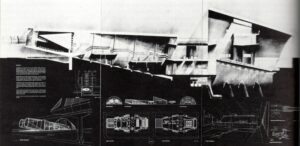
Winning entry in the 1991 “Next Age of Discovery” Competition, sponsored by the Sheet Metal Workers International Association and the American Institute of Architects.
?David Jon Rush
?
With a two-week deadline he entered the competition and won First Place for his design of a U.S. Pavilion using a photovoltaic skin. As a First Place winner, he received $3,000 and a trip to Expo ‘92.?This led David to further expermental projects as a consultant to a leading manufacturer of photovotaics. With the Sheet Metal Workers Association International, he took part in expositions and conferences in this country as well as Canada and Mexico.” Here it should be noted that David Rush remained in New York, immedialy got a job in his field, and today is President of the successful Architecture and Interior Design firm at ETH’s New York office.
.?
This account was followed by stories from many architects who won open competitions, many at a relatively young age, which turned out to be a welcome boost to the careers of many. This was well documentated in a more recent collaborative online work by Jean-Pierre Chupin (Université de Montréal) and? myself—Young Architects in Competitions — When Competitions and a New Generation of Ideas Elevate Architectural Quality (Potential Architecture Books, Montreal, 2020).
?? Just to name a few, there were many at the very early stages of our evolution whose contributions to our success were essential: Charles Sappenfield (Ball State), Carlos Casuscelli (Ball State and Miami), Robert Probst (University of Cincinnati), Frimmel Smith (American Institute of Architects), and professional advisers and architects, Bill Liskamm, Roger Schluntz, Jeffrey Ollswang, and Bill McMinn, all of whom allowed my presence as an interested observer during their jury deliberations.
? Among those who contributed to COMPETITIONS over the past decades, either as writers or leaders in the field, were Ray Gastil (Van Alan Institute), authors Will Morgan, Jayne Merkel, Michele Tilmont (Paris) and certainly Aaron Betsky. Here it would be remiss if I did not mention Thomas Hoffmann-Kuhnt of Wettbewerbe-Aktuell and Benjamin Hossbach of [phase eins], both of whom were influencial and helpful in their roles as publishers and facilatators of competitions in Germany and abroad. Hoffman-Kuhnt was founder and editor of the German publication, Wettwerbe-Aktuell, which not only featured the winners of competitions in Germany and Europe, but also the other awarded finalists. As a professional advisor of competitions, Hossbach and his firm administered many competitions, comprehensively documented in their publications, The Architecture of Competitions, as well as on their website.
? ?I also must mention Helen Castle, former editor of AD (Architectural Design) in London, who shepherded my 2004 book— Competing Globally in Architecture Competitions—through a period of gestation to publication.
? Although we now have experienced almost a complete lack of open competitions for real projects, both in this country and abroad as well—in favor of invited competitions—there is always that ray of hope that talents of young architects will again be recognized as essential contributors to the future of our environment and our quality of culture. -Ed
Important! – After the closing of our website on June 1, 2025, you will be able to access competitions.org for years to come for research purposes at Harvard GSD’s Loeb Library:
?



























